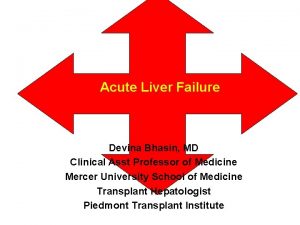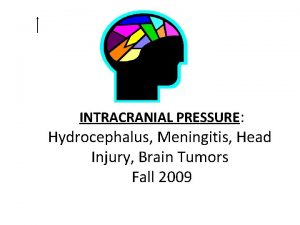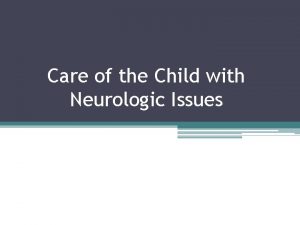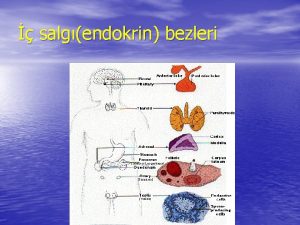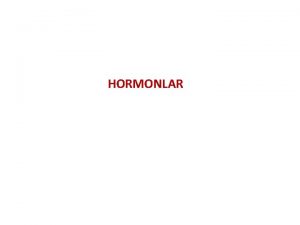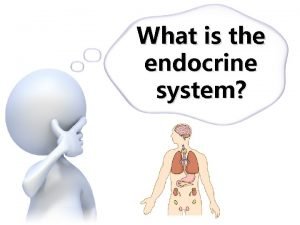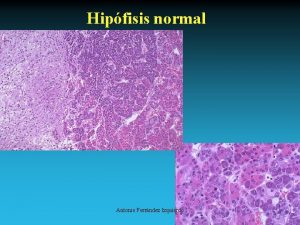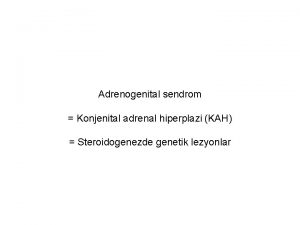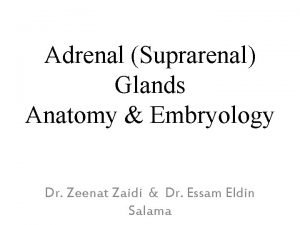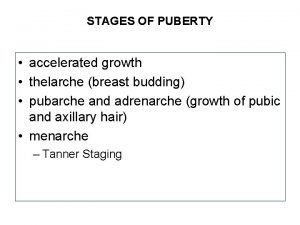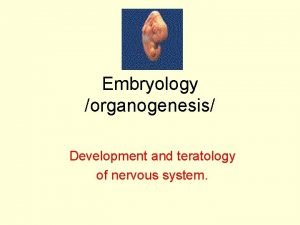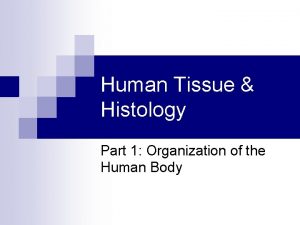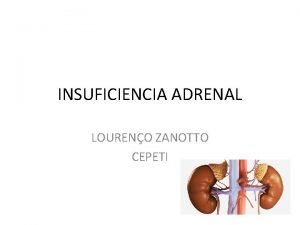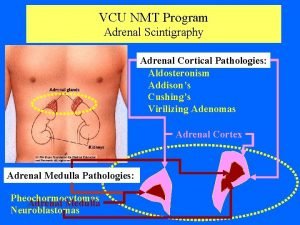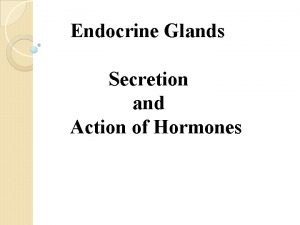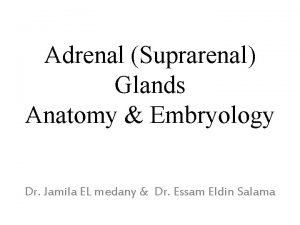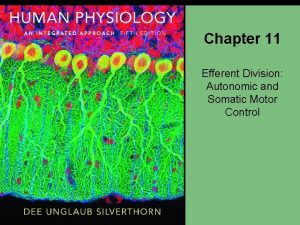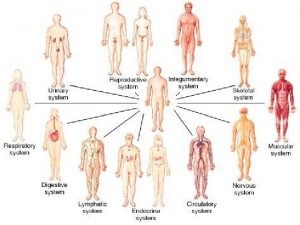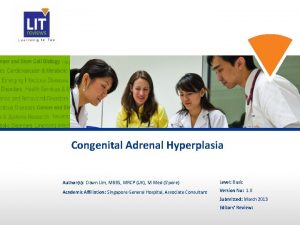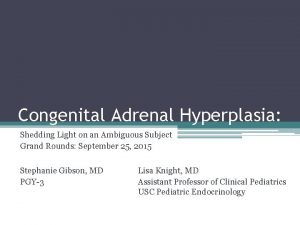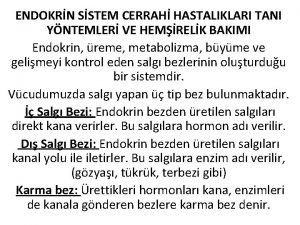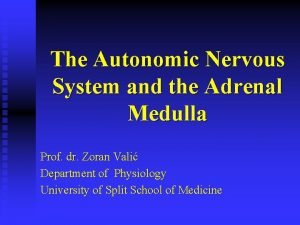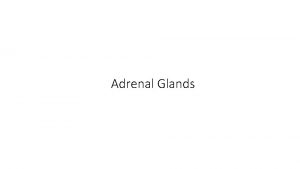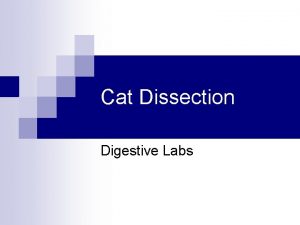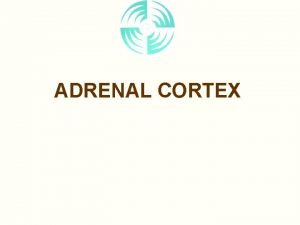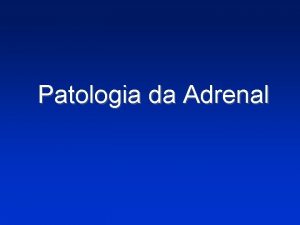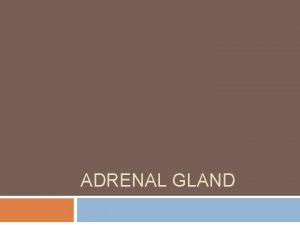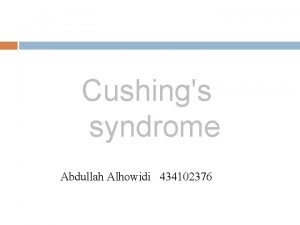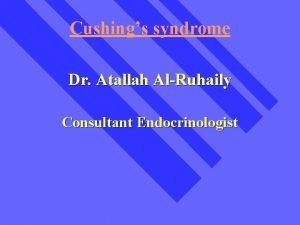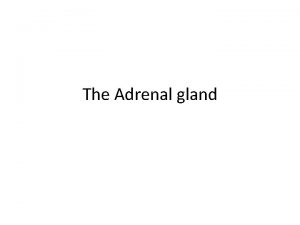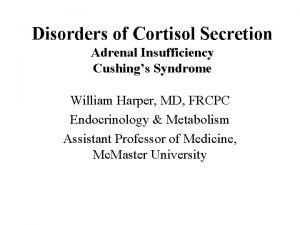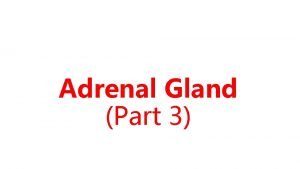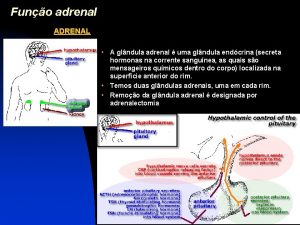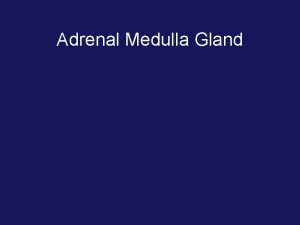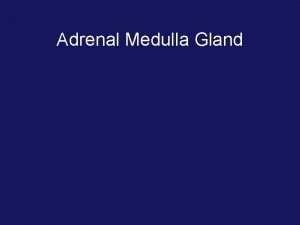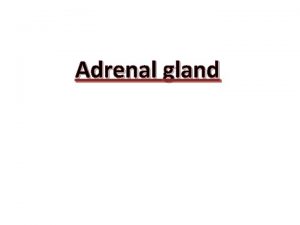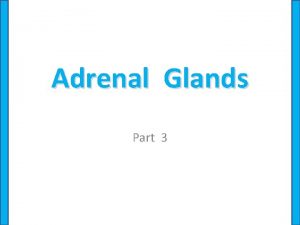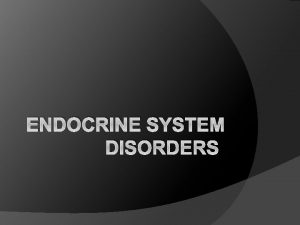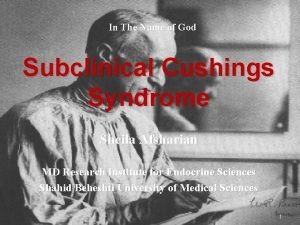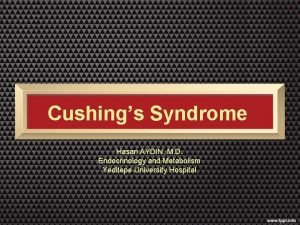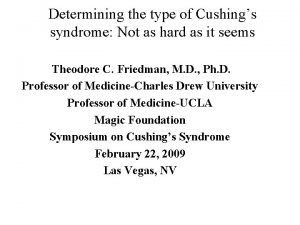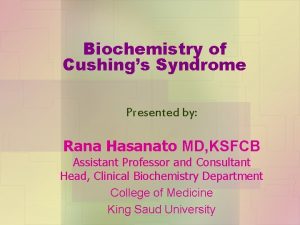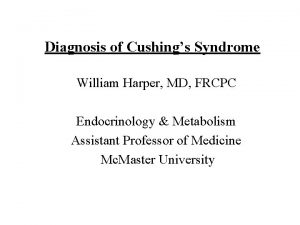Adrenal Glucocorticoid Hyperfunction Cushings Syndrome What is Cushings









































- Slides: 41

Adrenal Glucocorticoid Hyperfunction (Cushing’s Syndrome)

What is Cushing’s Syndrome?

❖ Excessive, long term exposure to glucocorticoids ➢ endogenous, exogenous or iatrogenic ❖ Cushing’s disease ➢ excessive ACTH secreting pituitary tumor

History of Cushing’s Syndrome

❖ “The basophilic adenomas of the pituitary body and their clinical manifestations” published in 1931 ➢ Patient: Minnie ■ Symptoms: amenorrhea and abnormal hair growth ❖ Acidophil hyperpituitarism vs basophil hyperpituitarism

Epidemiology

❖ Iatrogenic causes > Endogenous causes ❖ 1. 2 - 2. 4 new cases/million/year of Cushing’s disease (CD) ❖ CD comorbidity = 38% Diabetes Mellitus; 55% Hypertension ❖ Adrenal adenomas twice as prevalent as adrenal carcinomas ❖ Average Diagnosis Age = 36 -46 years; ~ 85% tend to be women ❖ Mortality rate with Cushing’s disease vs General population ~ 2: 1 ❖ Mortality rate with Cushing’s disease vs Cushing’s in remission ~ 1: 1

Signs and Symptoms

Most Common Symptoms: Least Common Symptoms: - High Blood Pressure - Insomnia - Weight Gain - Acne - Joint Pain & muscle weakness - Recurrent Infections - Edema of the Extremities - Moon Face - Excessive Body Hair Growth (Women) - Fatigue - Erectile Dysfunction (Men) - Poor Concentration - Irritability

Physiology of Cortisol

Glucocorticoids. . . ❖ Anti-inflammatory effects ❖ Catabolic (breaking down) effects ❖ Maintain blood pressure ❖ Increase blood glucose levels

Hypothalamic Pituitary Adrenal Axis ❖ Cortisol = end product of activation ❖ Negative feedback control ❖ Dysregulation = disorder

Pathophysiology of Excess Cortisol

NORMAL

Cushing’s Disease

Recall. . . Focus of Cushing’s Disease


Presentation of Clinical Features


http: //diseasespictures. com/wp-content/uploads/2015/02/Cushing-Syndrome-9. jpg https: //i. ytimg. com/vi/8 w. L 82 MDJQTc/maxresdefault. jpg https: //image. slidesharecdn. com/cushingssyndrome-160827080057/95/cushings-syndrome-15 -638. jpg? cb=1472284877

Diagnosis

Cushing’s Algorithm

Cushing’s Algorithm

Additional Diagnostic Tests

❖ CRH Testing ❖ MRI Scans ❖ CT Scans

Lab Abnormalities

Increased Levels of…. ❖ Cortisol ❖ Bone Turnover Markers ❖ Glucose Decreased Levels of…. ❖ Potassium ❖ Eosinophils and Lymphocytes

Treatment

Common Surgeries Trans-Sphenoidal Hypophysectomy Bilateral Adrenalectomy

Targeted Mechanisms ❖ Inhibit release of ACTH ❖ Inhibit steroidogenesis ❖ Receptor antagonist

release ACTH Pasireotide Mifepristone Gluco. C R Streoidogensis Mitotane

Future Research

Combinational Drug Therapy


Question 1

A 45 year-old man presents to his family physician complaining of muscle weakness, high blood pressure, sore joints, excessive weight gain especially in the abdomen, and a moon face. Abnormalities in his lab results show: Plasma Cortisol 980 nmol/L (<300 nmol/L) Plasma ACTH 194 ng/L (10 -50 ng/L) Fasting Plasma Glucose (FPG) 7. 0 mmol/L (<6. 1 mmol/L) The patient’s lab tests also show decreased WBC counts and after administering a high dose dexamethasone suppression test, cortisol levels decreased to <50% of pre-clinical treatment. What is the most likely explanation for this patient? A) a tumour of the adrenal cortex secreting excess cortisol B) an ectopic ACTH tumor operating outside of the HPA axis C) a tumour in the pituitary gland over secreting ACTH (Cushing’s Disease) D) type II diabetes mellitus due to hyperglycemia E) he’s all good and his lab tests are normal

A 45 year-old man presents to his family physician complaining of muscle weakness, high blood pressure, sore joints, excessive weight gain especially in the abdomen, and a moon face. Abnormalities in his lab results show: Plasma Cortisol 980 nmol/L (<300 nmol/L) Plasma ACTH 194 ng/L (10 -50 ng/L) Fasting Plasma Glucose (FPG) 7. 0 mmol/L (<6. 1 mmol/L) The patient’s lab tests also show decreased WBC counts and after administering a high dose dexamethasone suppression test, cortisol levels decreased to <50% of pre-clinical treatment. What is the most likely explanation for this patient? A) a tumour of the adrenal cortex secreting excess cortisol B) an ectopic ACTH tumor operating outside of the HPA axis C) a tumour in the pituitary gland over secreting ACTH (Cushing’s Disease) ## D) type II diabetes mellitus due to hyperglycemia

Question 2

Excess of which of the following hormones gives rise to the symptoms in Cushing's Disease? A) Cortisol B) Testosterone C) Growth Hormone D) Calcitonin E) Aldosterone

Excess of which of the following hormones gives rise to the symptoms in Cushing's Disease? A) Cortisol ## B) Testosterone C) Growth Hormone D) Calcitonin E) Aldosterone

Thank You!
 Acromegaly before and after
Acromegaly before and after Cushings triad
Cushings triad Icp monitoring nursing
Icp monitoring nursing Macewen sign icp
Macewen sign icp Cushing's triad signs
Cushing's triad signs Psödo cushing sendromu
Psödo cushing sendromu Adrenal bez histolojisi
Adrenal bez histolojisi Thyroid
Thyroid Arka hipofiz hormonları
Arka hipofiz hormonları Adrenal gland hormones
Adrenal gland hormones Adenoma
Adenoma Konjenital lipoid adrenal hiperplazi
Konjenital lipoid adrenal hiperplazi Thyroid gland cells
Thyroid gland cells Adrenal cortex develops from
Adrenal cortex develops from Congenital adrenal hyperplasia characteristics
Congenital adrenal hyperplasia characteristics Rathke
Rathke Objective of stress management
Objective of stress management Adrenal gland epithelium
Adrenal gland epithelium Adrenal yetmezlik acilci
Adrenal yetmezlik acilci Adrenal glands
Adrenal glands Arritimias
Arritimias Adrenal cushing
Adrenal cushing Cow adrenal gland
Cow adrenal gland Slide
Slide Levotironina
Levotironina Relation of adrenal gland
Relation of adrenal gland Adrenal sympathetic pathway
Adrenal sympathetic pathway Acth
Acth Menopause and mania
Menopause and mania Adrenal drugs pharmacology
Adrenal drugs pharmacology Fatiga causada por la (quimio or quimioterapia)
Fatiga causada por la (quimio or quimioterapia) Human body systems images
Human body systems images Acth stimulation test
Acth stimulation test Non classical adrenal hyperplasia
Non classical adrenal hyperplasia Raas system
Raas system Hymen
Hymen 21 hydroxylase deficiency
21 hydroxylase deficiency Adrenal bezin hipofonksiyonu sonucu gelişen tablo
Adrenal bezin hipofonksiyonu sonucu gelişen tablo The suprarenal (adrenal) medullae secrete
The suprarenal (adrenal) medullae secrete Zona reticularis gonadocorticoids
Zona reticularis gonadocorticoids Left ureter
Left ureter Adrenal medulla cortex
Adrenal medulla cortex

